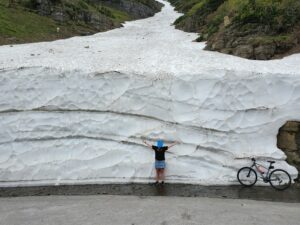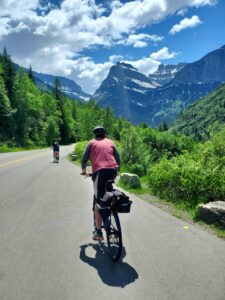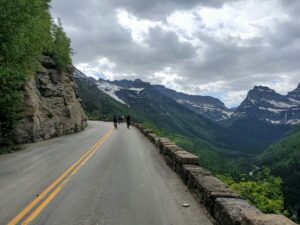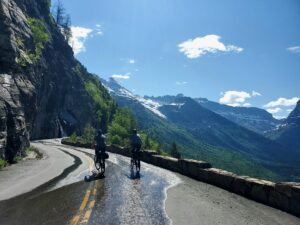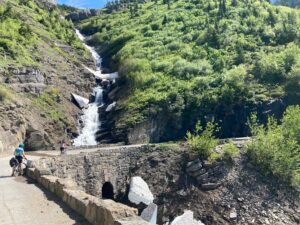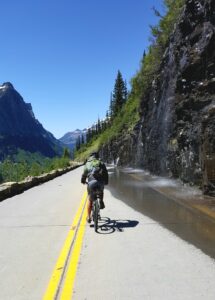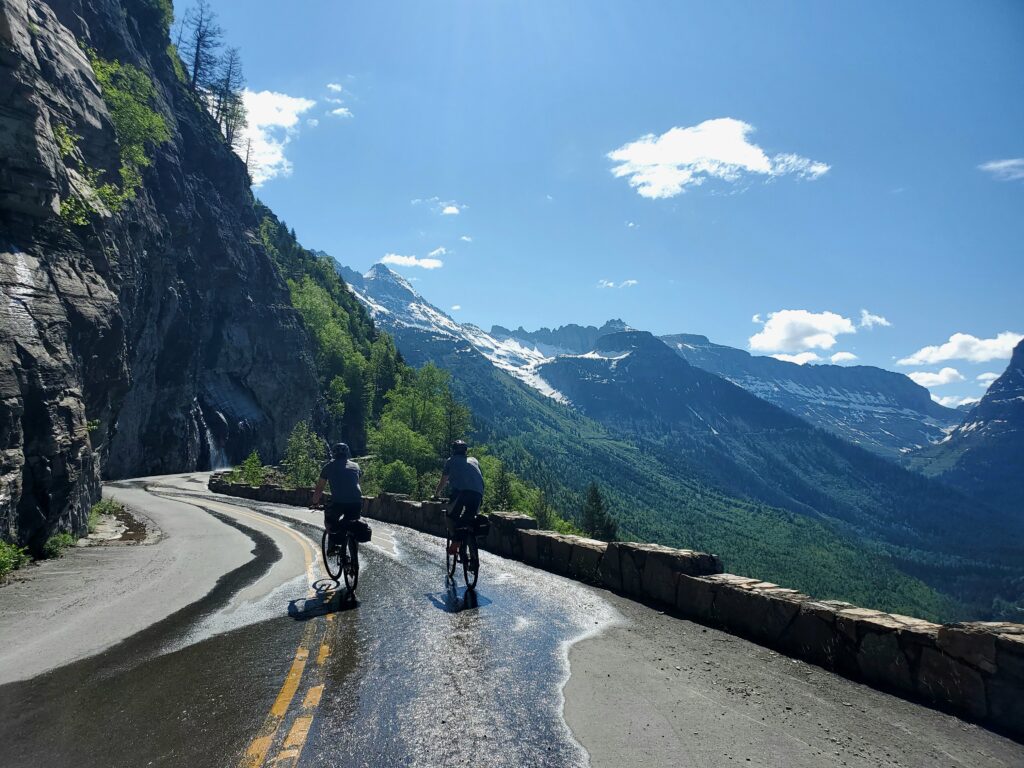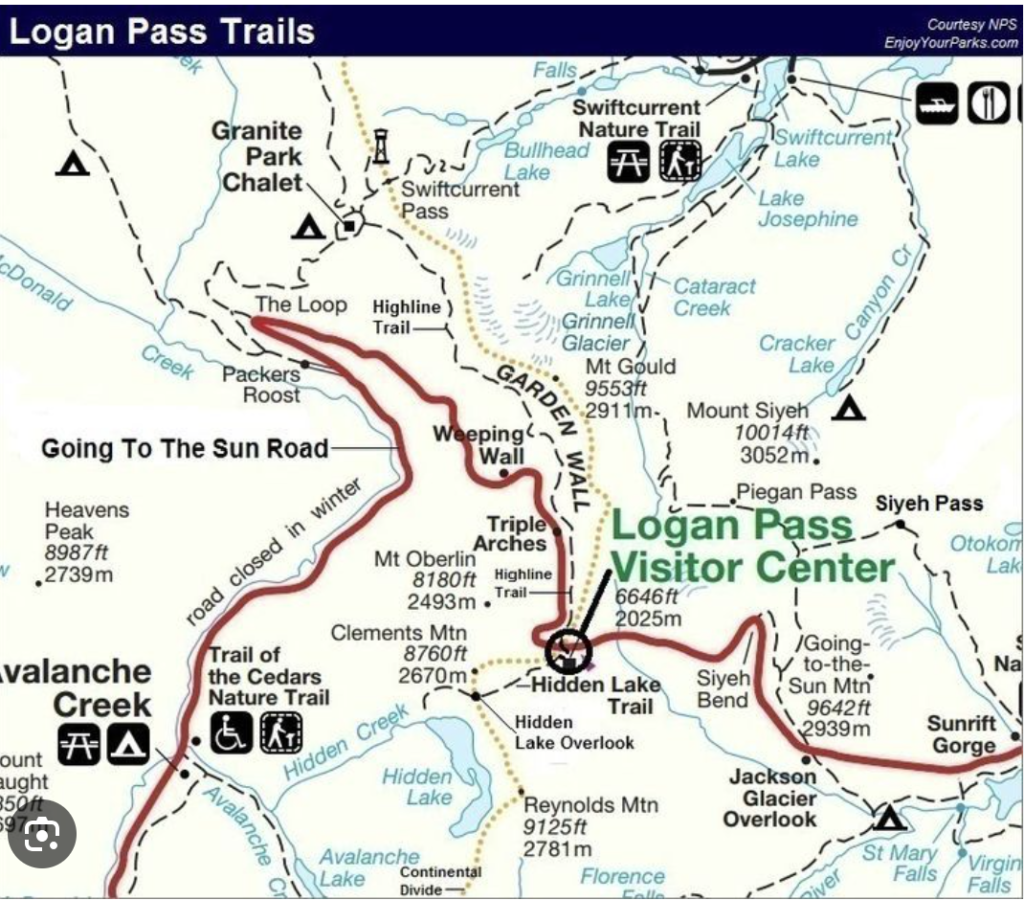Bike Going-to-the-Sun Road for an unforgettable experience
I may be biased because this park is located in my home state of Montana, but Glacier National Park is the most stunning park I have been to to date. As I’ve said in previous posts, biking is the absolute best way to fully experienced a national park without traffic. Climbing Going-to-the-Sun Road in GNP is my favorite ride so far. It is also the highest rated in difficulty due to the constant uphill grade. But I promise the thigh burning is worth the breathtaking views!
Going-to-the-Sun Road is the only road that cuts through Glacier Park from West Glacier to St. Mary spanning 50 miles total. It is known as an engineering marvel as the road winds and cuts through mountains and rock walls. The road itself is pretty narrow making it more suitable for bikes than cars.
Going-to-the-Sun Road opens for a short window just for bikes before opening to cars each year. The window to make it to the very top (Logan Pass) is an even smaller time frame. Depending on the winter’s snow fall, the opening dates vary each year. The entirety of the park is only open about 4 months each year. I’ve done this ride 4 times now, but have only made it to Logan Pass once. We’ve done this ride as early as the beginning of May to the beginning of July. Most often you can count on the month of June to be prime riding season. But timing really is everything.
Hill Alert
(Honestly the entire ride up the road is just one giant hill)
Biking typically starts at Avalanche Campground where the road is closed to cars. From here is about 8 miles to the Loop, a dramatic hairpin turn, that serves as the midpoint just after the famous Westside Tunnel. These first miles are relatively easy and flat, especially the first 5 miles, before the grade increases. Enjoy the raging rivers, snow covered mountain peaks and lush greenery without bumper to bumper cars and the full turnouts that are common in the summer months (Glacier Park sees about 3 million visitors each year).
The loop makes for a great picnic spot with some nice rocks to sit on and bathrooms. Going forward prepare for a serious workout with the next 8 miles at a constant 6% grade. Closer to the top I had to stop nearly every half mile because it felt like my quads were going to explode. This is a very popular e-bike ride and I can definitely see why with the 3400 ft total elevation gain!
The Weeping Wall, Bird Women Falls and Triple Arches are popular stops for pictures (and resting). The falls and especially the Weeping Wall are flowing from snow melt this time of year so watch out for icy water. Once you’ve made it to the Triple Arches, a handmade rock bridge, you’re nearly to the top. One mile left to go and trust me it’ll feel like you’re ready to give up, but push on! Make sure to get your mandatory picture with the Logan Pass sign as you enter the parking lot. While no services are available here, the views and most importantly the sense of accomplishment are unbeatable.
The good news: when heading downhill, you barely have to pedal for the first 11 miles. This is my younger sister’s favorite part and makes the uphill battle completely worth it, especially for thrill seekers. Be careful around corners, watch for rocks and water on the road as you fly down the mountain. Thanks to the high speeds, the trip down only takes about an hour. Your legs won’t feel tired anymore after he adrenaline burst–at least until you have to pedal for the last 5 miles. Be sure to pack some warmer layers for the downhill. It gets pretty chilly with the water and wind from the speed. I highly recommend gloves and rain gear.
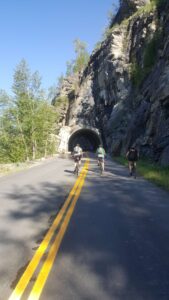
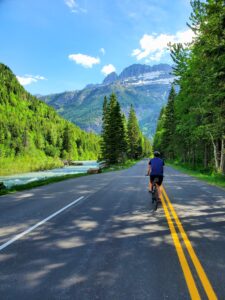
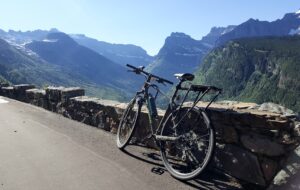
Glacier averages 16 feet of snow a year and accumulates anywhere between 50-80 ft at the big drift just East of Logan Pass. It takes more than 2 months to plow the entire road. The plow progress and avalanche danger dictate how far you’re allowed to bike, road crews don’t work on the weekends so that’s when I would recommend taking the trip. Biking is usually best between mid may to late June, but that latest the road has been opened recently was mid July. Even if you are unable to make it to the very top at Logan Pass, the ride absolutely still worth it. This is the ultimate way to experience Going-to-the-Sun Road, far better than by car, and enjoy all the sights Glacier has to offer.
After every ride I swear to myself (and my biking companions) that I’m never doing that ride again because my legs feel like they’re going to fall off. Yet each year I keep coming back and is one of the highlights of my year every time! We gave this ride 10/10 in every category because it truly is, in my opinion, the best ride you can do. The road is wide and in great condition, views are unbeatable, but the climb definitely makes this the hardest ride I’ve ever done. I can’t say it enough though–this ride is a must do!
Fun Facts
- Glacier became a National Park May 11, 1910. At 1 million acres it’s about the size of Rhode Island
- 762 lakes, 200 waterfalls, 158 hiking trails and 26 glaciers (down from 150 in 1850) make up the park
- GTTS Road was originally known as the trans mountain highway completed July 15, 1933, paved in 1952 and took nearly 2 decades to plan and build
- It is known (obviously) as one of the most breathtakingly beautiful drives in Montana
Helful hints
